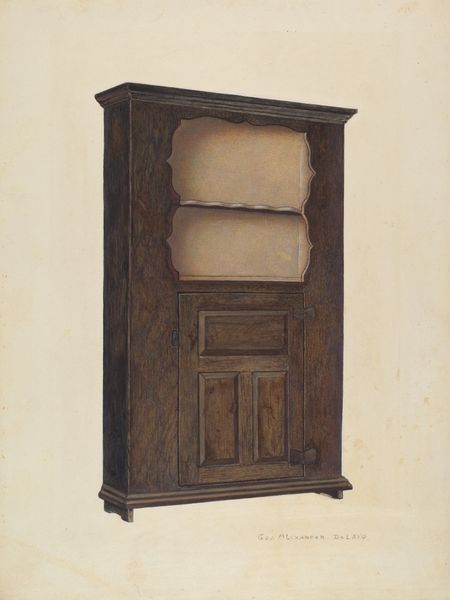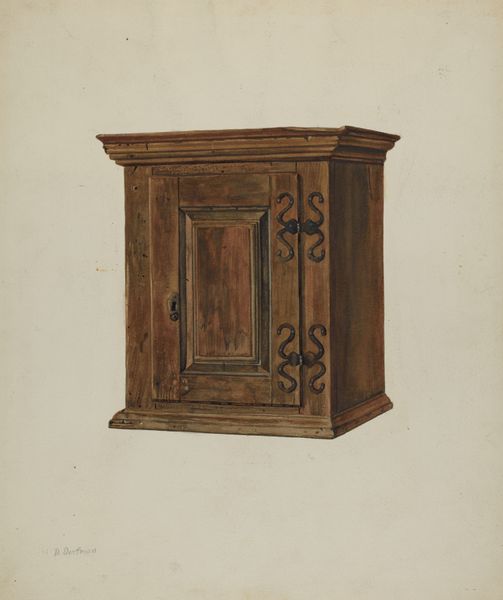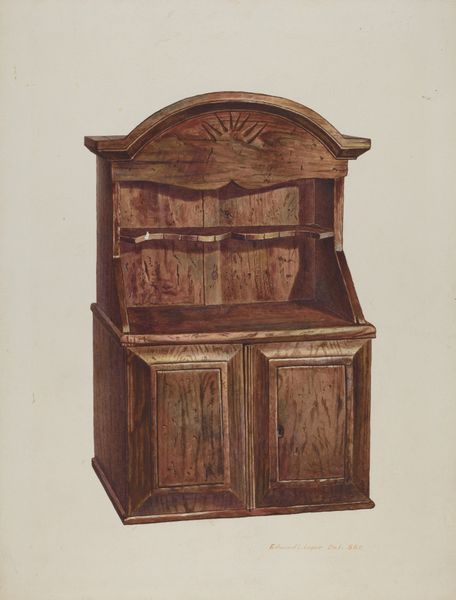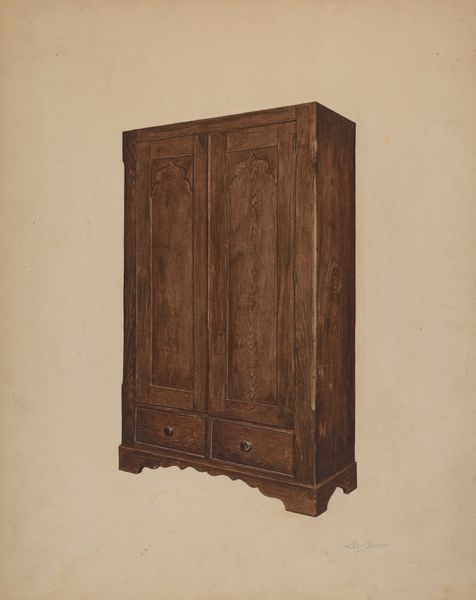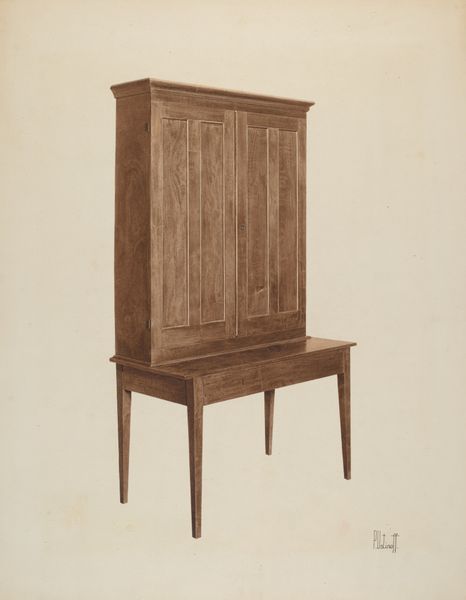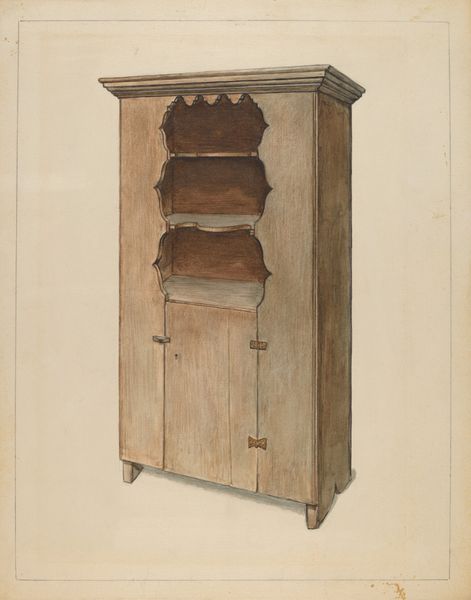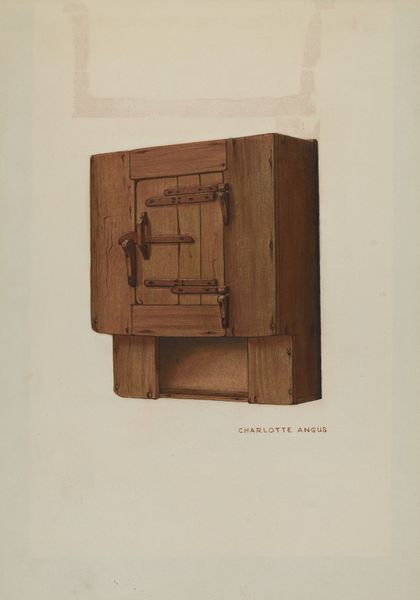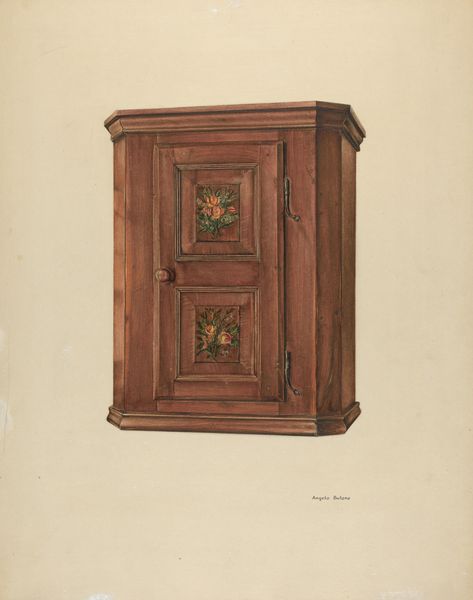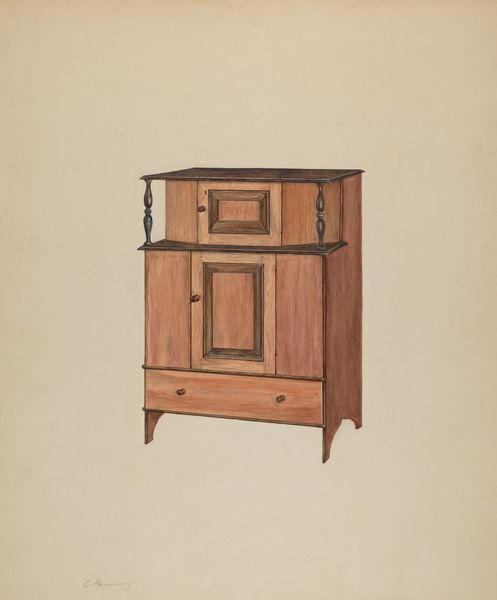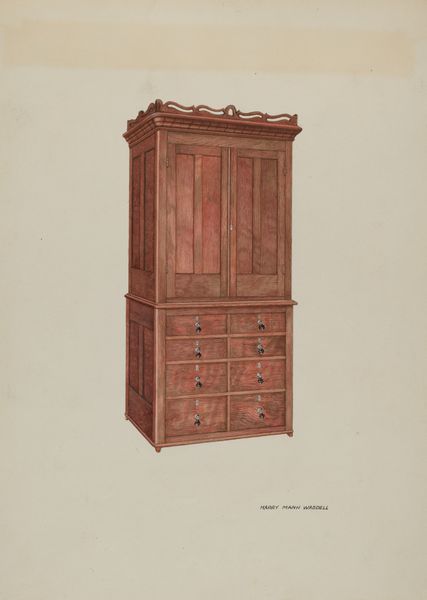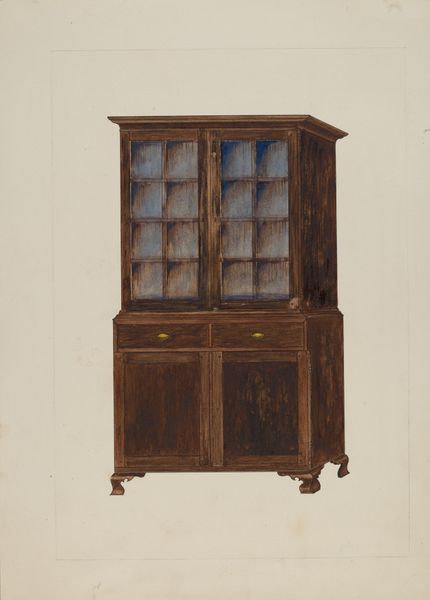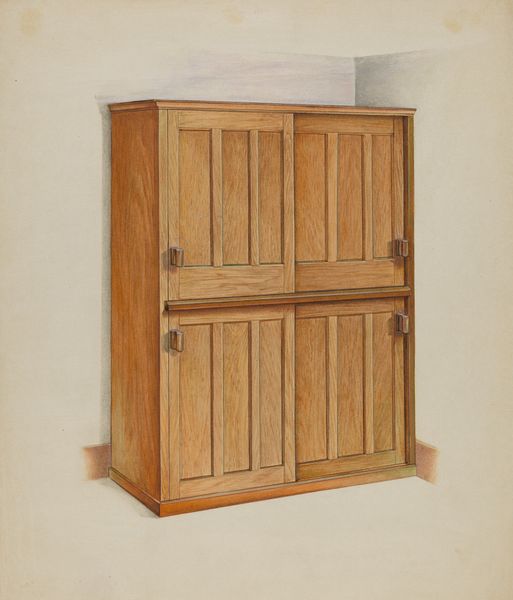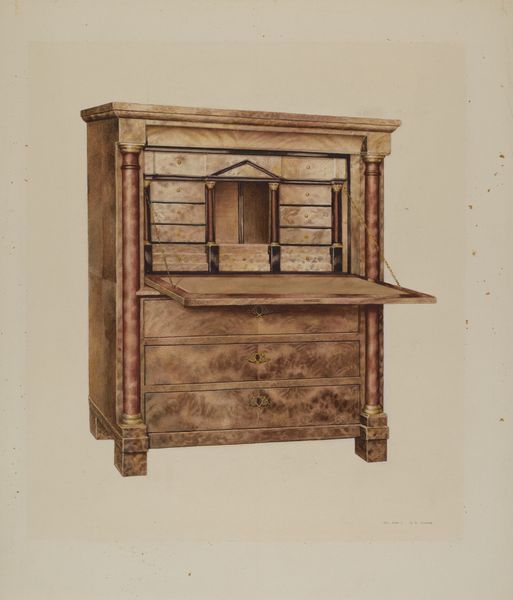
drawing, watercolor
#
drawing
#
water colours
#
oil painting
#
watercolor
#
genre-painting
#
watercolor
Dimensions: overall: 42.7 cm (16 13/16 in.) Original IAD Object: 30"high, 23 1/2"wide, 12"deep.
Copyright: National Gallery of Art: CC0 1.0
Editor: So, here we have Betty Jean Davis' "Wall Cabinet" from around 1939, done in watercolor. It's… well, it's a cabinet! It's interesting, though, how the artist chose to depict something so utilitarian. What strikes you about this piece? Curator: What interests me is the context. During the Depression, the Federal Art Project employed artists to document American design. Everyday objects like this wall cabinet gained new importance as symbols of American identity and resilience. Does knowing that alter your perspective? Editor: It does a bit! It feels less random, more… intentional. Like, showing pride in simple, functional things. Do you think the medium, watercolor, plays into that at all? Curator: Absolutely. Watercolor lends itself to a kind of detailed observation, a careful recording of surfaces and textures. It emphasizes the handmade, the artisanal quality of this cabinet, in contrast to mass-produced goods. How do you think a contemporary audience might react to this painting? Editor: Hmm… Maybe they'd see it as nostalgic, or even kitsch. Unless they understood the historical background. Without that, it might just seem like a quaint rendering of an old cabinet. Curator: Precisely. The politics of imagery are always at play. What gets deemed "worthy" of artistic representation, and how that representation shifts over time, reflects evolving social values and power structures. It highlights the artist’s hand rather than a manufactured gleam. This emphasis creates space for a unique expression, diverging from mere photorealistic depiction. Editor: So, understanding the historical context is crucial to really appreciate the piece, it really frames it. I’ll keep that in mind when I'm interpreting art. Curator: And I'll look closer at watercolor for truth. Thanks for your time!
Comments
No comments
Be the first to comment and join the conversation on the ultimate creative platform.
